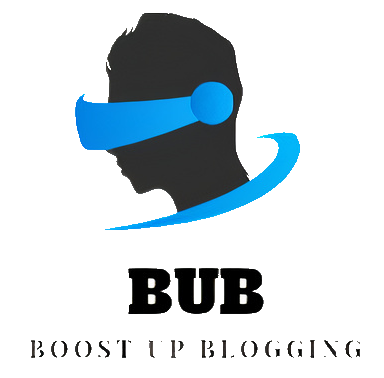A beginner’s guide for a successful NFT trade.
The traditional forms of trade and investments are being challenged by the advantageous perils that arise from the crypto trade for some time now. Still, the NFTs have explicitly made their mark over the sector’s use cases with its exponential growth in recent years.
What defines an NFT?
Non-fungible tokens are digital assets developed with the Ethereum and/or relevant blockchain. The blockchain is the technology that supports the cryptocurrencies to function, and NFTs are a by-product that emerged from the crypto trade. The tokens are non-fungible, which means one NFT is not of equal value to the other. This makes NFTs the ideal tool for trade and investment.
The NFTs have evolved throughout their span of existence, including but not limited to mintable objects starting with digital art to paintings, music, animation, video, gaming characters.
Here we’ll look at what an NFT Marketplace is, how buyers and sellers can use it to their advantage, what features are a must-have and expected in a marketplace, and what the future holds for NFT traders and enthusiasts.
What is an NFT Marketplace, and how does it work?
An NFT marketplace is the online market for NFTs that buyers and sellers make use of to list, sell, buy, trade, and invest on NFTs. These marketplaces are varied, depending upon the seller’s preferences. There are dedicated marketplaces for niche sellers, public marketplaces, and creators or businesses who use no-code launchpads to launch their custom marketplace to list their projects.
Though there are many aspects of the marketplace that differ from one another, some must-haves make a marketplace function as a unit, and anything less is a faulty system of organization of the marketplace you need to be aware of.
The essential working model of a marketplace should include – minting, authentication, listing options, fund or wallet integration, relevant standard practices, security, to name a few.
Must-have Features in a marketplace.
Tokenization.
- Tokenization is the process of authentication of the NFTs in relevant standards that it was developed on.
- Minting it in the same blockchain.
- This helps with cementing the NFT to the owner through smart contracts.
- Minting an NFT in the blockchain is a strenuous and thorough process.
Front-end designs and development.
- The front-end is essential for any business to catch the customer’s attention, and it is the first impression tool.
- It should be loaded with important information, impeccable layouts, relevant aesthetics that suit the marketplace.
- There should be a “call to action” under the bid and the purchase buttons that direct the customer to trusted wallets.
- Updated and transparent transactions in the listings with transaction history of NFTs in the secondary Marketplace.
Security.
- Security is a given once the NFT is minted, but the risk of scams doesn’t stop there.
- There are still scams and ill-intent actions that put the owners at risk of getting scammed.
- Apart from duplicating and replicating, the NFT buyers run at the risk of a phenomenon called “sleepminting.”
- The marketplace should be loaded with cautionary and relevant measures to stop any mishaps.
- Since the transactions are also an integral part of the blockchain in transferring ownership, it takes care of itself.
Funds integration.
- An ideal marketplace should host a plethora of wallets for the smooth sailing flow of purchase.
- Since the NFTs are bought with crypto-coins of Ethereum or similar blockchain, they should have APIs in place for transactions.
The mentioned factors are merely the basic features a marketplace should hold, and these features should be tested and troubleshooted as much as possible before launching them.
How do the buyers and sellers engage with the Marketplace?
Marketplace works differently for either party. There are many niche distinctions even between the buyers and sellers. Some play and participate for the fun of it, and there are some who treat the industry like a business and engage the market for trading, investing, and selling.
There are two ways people can purchase or list the NFTs, one being in an auction and another with a fixed price, and there are even some sub-categories in the method of listing. Let’s delve more into how the marketplace works for buyers and sellers.
Marketplace for buyers.
- The Marketplace for buyers is probably more competitive compared to sellers.
- New launches and recurring NFTs in the Marketplace are saturated with investors who try and get their hands on them.
- One strategy buyers can practice – is to sign up for updates and newsletters from desired marketplaces and keep up-to-date with launches.
- This enables them to make strategic moves with the comfort of sparing time to strategize how to own that NFT.
- One other strategy collectors can do is follow the artist or business through socials and track the recurring piece.
- Buyers can also keep a lookout for successful NFT drops and wait for them to appear on secondary marketplaces.
- This way, the NFTs are promising investments and would do well in subsequent markets.
Marketplace for sellers.
- The Marketplace works differently for investors who trade the NFTs to creators who publish their pieces.
- More often than not, investors and collectors in secondary markets list the NFTs in the same Marketplace.
- This enables NFT enthusiasts and other collectors of the same niche to make their purchases.
- The collectors can look for the most opportune moment to list the NFT in the secondary market.
- Auctions always drive the NFT sale upwards, so that is a preferred option among sellers in the secondary market.
- The creators and businesses can choose to opt for a dedicated team of software developers to build their Marketplace.
- This option takes a lot of time and capital.
- The other option is to choose a no-code launchpad like the one from GuardianLink to create a custom marketplace.
The deal of a lifetime NFTs holds for NFT holders.
The NFT sector is thriving, and 2021 is the bar the sector has set for itself to beat. It makes absolute sense for the industry to take an upward trajectory, especially with all the new and improving discoveries in its use scenarios in recent times.
The marketplaces are the housing for every NFTs to be listed and bought. The buyers and sellers can turn to trusted platforms or start their own dedicated marketplaces. Any which way, the NFTs are here to stay, and the time is NOW to strike.






